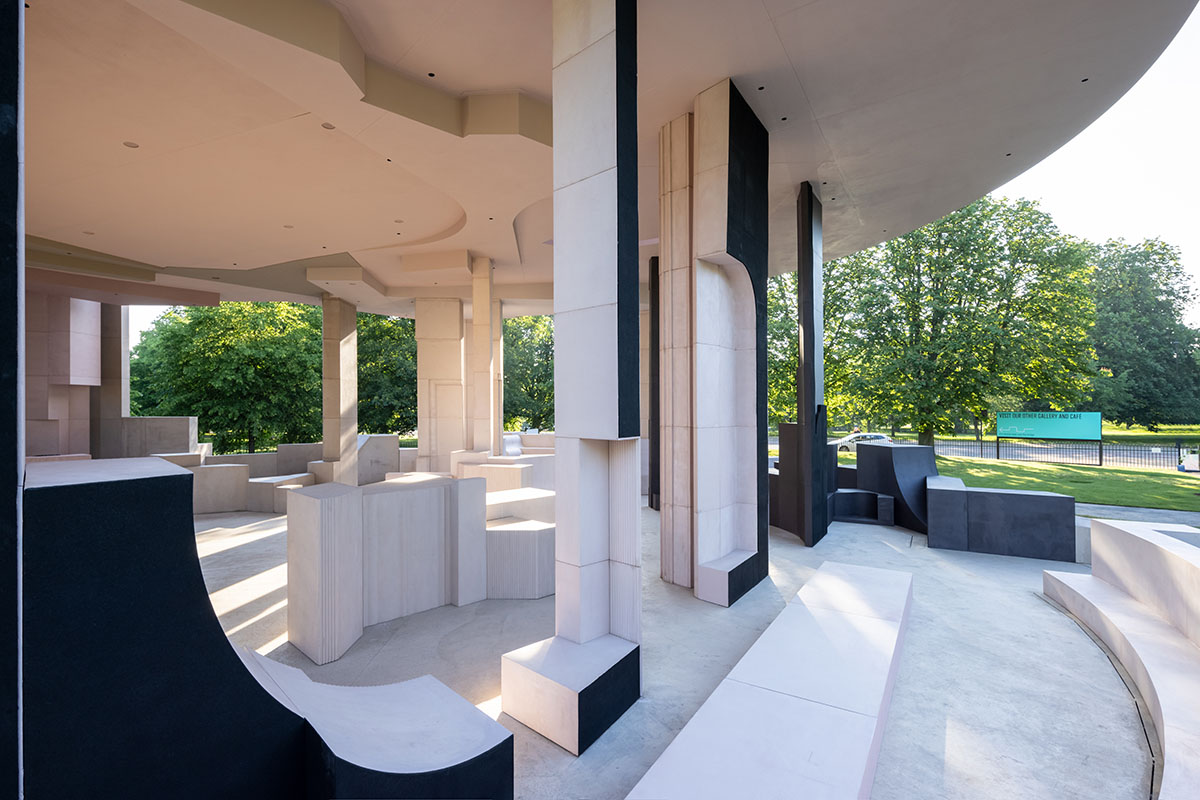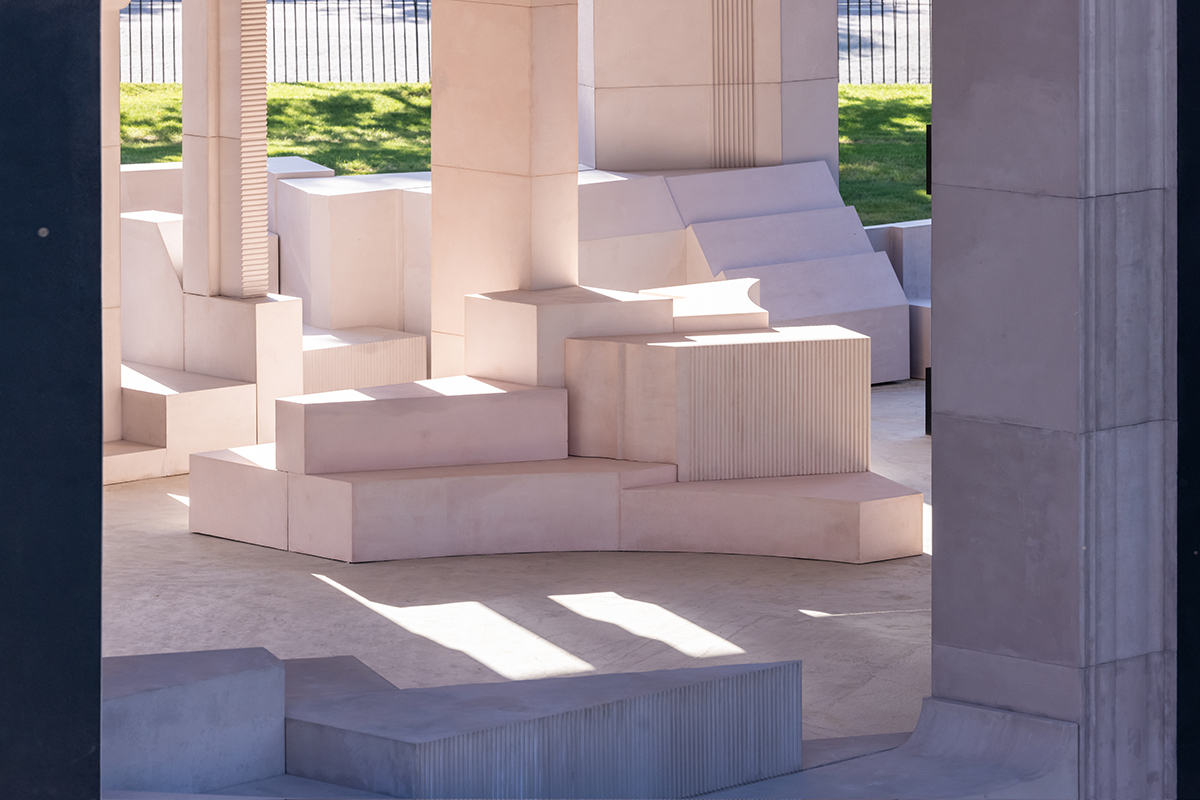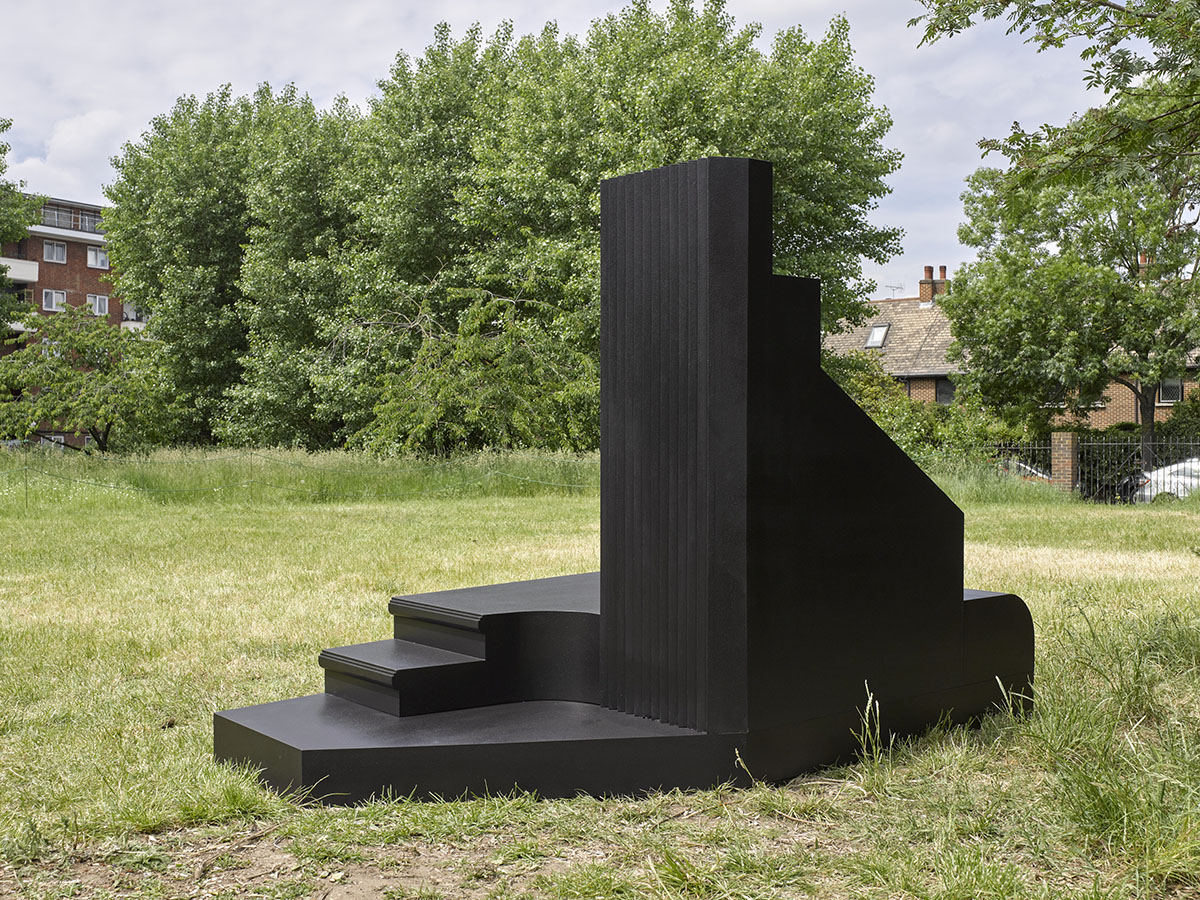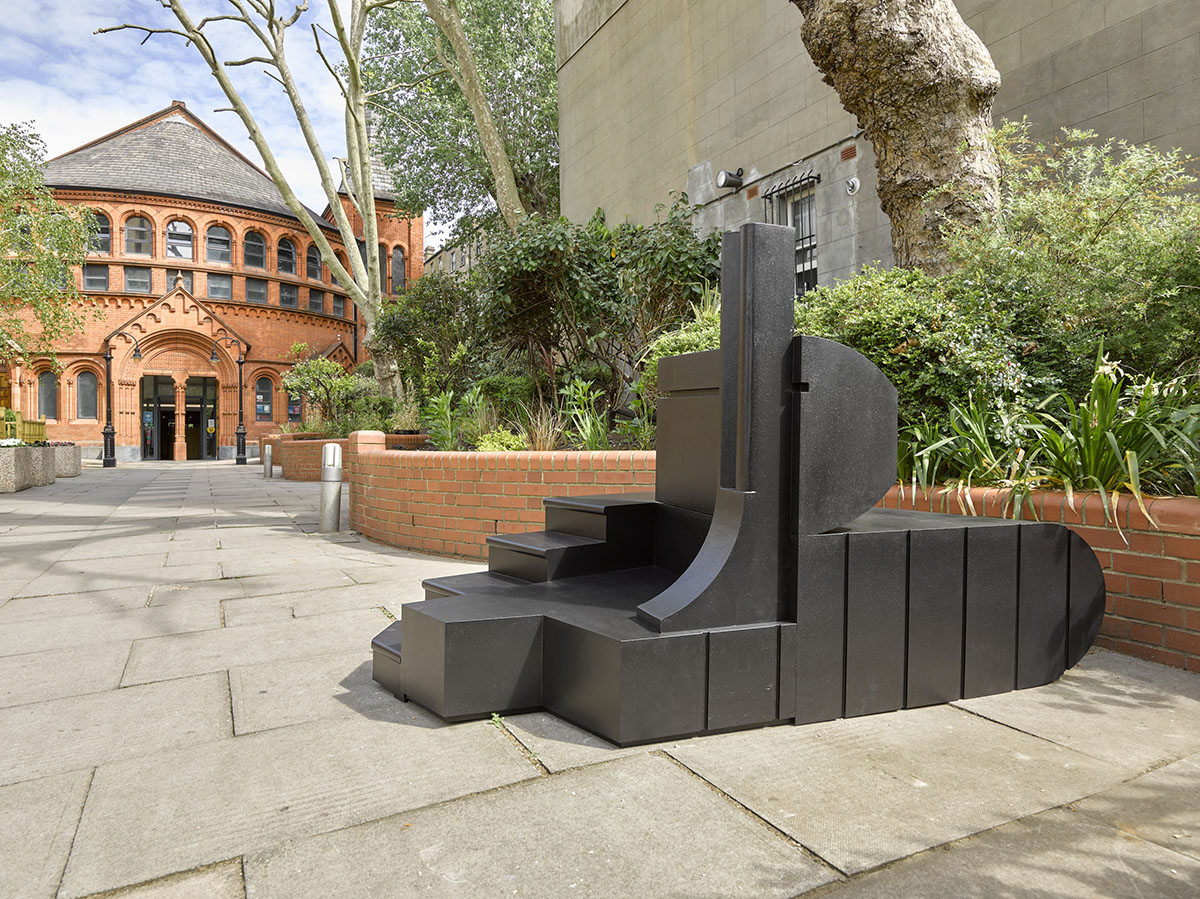Submitted by WA Contents
Counterspace reveals Serpentine Pavilion referencing to informal community spaces of London
United Kingdom Architecture News - Jun 08, 2021 - 15:34 4371 views

Johannesburg-based practice Counterspace, led by Sumayya Vally, has completed the 20th Serpentine Pavilion in London's Kensington Gardens, the pavilion is set to open to the public on June 11, 2021 while the pavilion will be closed until Monday 14 June 2021, as stated the Serpentine.
Once open, Counterspace-designed pavilion will be on view with a public programme until 17 October 2021 in Kensington Gardens.
The Pavilion's design takes cues from the past and present places of meeting, organising and belonging across several London neighbourhoods significant to diasporic and cross-cultural communities, including Brixton, Hoxton, Tower Hamlets, Edgware Road, Barking and Dagenham and Peckham, among others.

Among these places there are some of the first mosques built in the city, such as Fazl Mosque and East London Mosque, cooperative bookshops including Centerprise, Hackney; entertainment and cultural sites including The Four Aces Club on Dalston Lane, The Mangrove restaurant and the Notting Hill Carnival.
The designer Sumayya Vally used a method of "abstracting, superimposing and splicing" from architectures of these buildings that vary in scales of intimacy. She has translates the shapes of London into the Pavilion's structure in Kensington Gardens - where these forms meet, they create a new place for gathering in the Pavilion.

Counterspace is directed by the all-woman team of Sumayya Vally, Sarah de Villiersand Amina Kaskar, and recently Sumayya Vally was named as world's most influential architect shaping the future in 2021 TIME100 List. All three were born in 1990 and they are the youngest ever architects to be commissioned for the Serpentine Pavilion.
Responding to the historical erasure and scarcity of informal community spaces across the city, the design of the Pavilion references and pays homage to existing and erased places that have held communities over time and continue to do so today.

"My practice, and this Pavilion, is centred around amplifying and collaborating with multiple and diverse voices from many different histories; with an interest in themes of identity, community, belonging and gathering," said Sumayya Vally.
"The past year has drawn these themes sharply into focus and has allowed me the space to reflect on the incredible generosity of the communities that have been integral to this Pavilion."
"This has given rise to several initiatives that extend the duration, scale and reach of the Pavilion beyond its physical lifespan."
"In a time of isolation, these initiatives have deepened the Pavilion’s intents toward sustained collaboration, and I am excited to continue this engagement with the Serpentine’s civic and education teams and our partners over the summer and beyond," she added.

The Pavilion is made of reclaimed steel, cork and timber covered with micro-cement. The outer language of the Pavilion varies in textures and combines hues of pink and brown that are directly taken from the architecture of London and references changes in quality of light.
In a press release, the Serpentine said that "for the first time in the history of this commission, four Fragments of the Pavilion are placed in partner organisations whose work has inspired the design of the Pavilion: one of the first Black publishers and booksellers in the UK New Beacon Books in Finsbury Park, a multi-purpose venue and community centre The Tabernacle in Notting Hill, arts centre The Albany in Deptford and the new Becontree Forever Arts and Culture Hub at Valence Library in Barking and Dagenham.
These Fragments were installed to support the everyday operations of these organisations while enabling and honouring gatherings of local communities that they have supported for years.
To minimize the carbon of the structure both in the material production and in its transportation, Sumeyya Valley and organizers have worked with AECOM for engineering consultancy.

"Historically the Pavilion has been a vehicle for showcasing innovative materials, and this year the team focused on taking the original aluminium and concrete-clad concept and adopting instead a range of reused and repurposed materials. Thus, as well as having social sustainability at its heart, the Pavilion has many positive environmental credentials," said AECOM in a report, specifically prepared for the Pavilion.
"The Pavilion’s primary structure is made entirely from steelwork salvaged from other projects. Already in storage at contractor Stage One’s yard, where all elements of the Pavilion have been prefabricated off site, this minimised the embodied carbon of the structure both in the material production and in its transportation."
"Furthermore, carbon-negative cork produced as a by-product from the wine industry, and micro-cement derived from lime and waste from marble production, are used in the structure’s cladding," added AECOM.

"Steelwork has only been used where dictated by structural requirements and sustainably sourced timber has been used in all other areas. The sculptural forms are constructed using a lightweight plywood to ensure the pavilion is simple to transport, construct, deconstruct and relocate in the future."
Like previous Pavilions that the 2021 Pavilion will be dismantled and reinstalled in another place by Therme Group.

Serpentine Artistic Director Hans Ulrich Obrist and CEO Bettina Korek selected this year’s architect with advisors Sir David Adjaye OBE, Professor Lesley Lokko and David Glover alongside the Serpentine team – Julie Burnell (Head of Construction and Buildings) and the project’s curator Natalia Grabowska.
2019 Serpentine Pavilion was designed by Japanese architect Junya Ishigami with a cave-like structure. Previous Serpentine Pavilion designers include Frida Escobedo, Bjarke Ingels and Sou Fujimoto.
All images © Iwan Baan
> via Serpentine